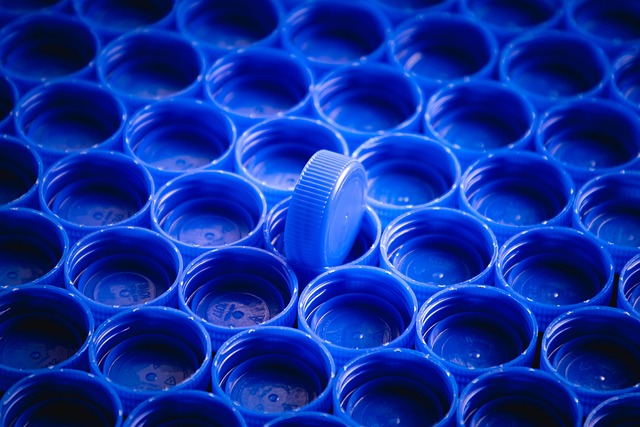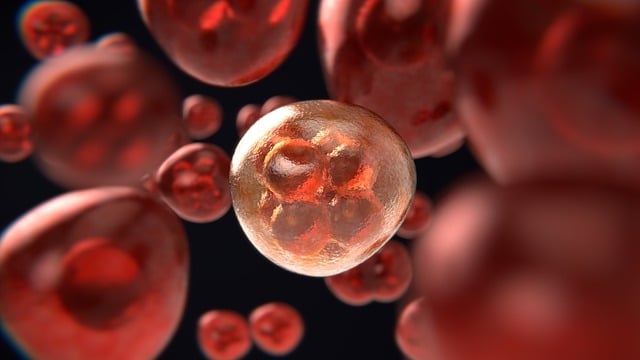Stem cell culture media is a critical component driving advancements in regenerative medicine and biotechnology, enabling the growth and control of stem cells in vitro. Optimizing media components through xeno-free and pyrogen-free formulations reduces immune reactions and variability. Customized media tailored to specific stem cell types, like mesenchymal stem cells (MSCs), using serum-free growth medium, enhances experimental consistency and cell viability. Rigorous quality control and regular media screening are essential for successful long-term cultures and large-scale applications, ultimately advancing therapeutic strategies in stem cell research.
Stem cell research, a promising frontier in biotechnology, relies heavily on the meticulous manipulation of stem cell culture media. This essential component provides the cellular environment required for the proliferation and differentiation of stem cells. This article delves into the intricacies of stem cell culture media, exploring its fundamental role, key components, customization possibilities, and future advancements that are shaping the landscape of stem cell research. Unraveling these aspects is crucial for understanding the foundation upon which groundbreaking discoveries in this field are built.
- Understanding Stem Cell Culture Media: The Foundation of Research
- Key Components and Formulations for Optimal Cell Growth
- Considerations for Customization and Quality Control
- Advancements and Future Implications in Stem Cell Research Media
Understanding Stem Cell Culture Media: The Foundation of Research

Understanding stem cell culture media is fundamental to any research in this field. This specialized medium provides the essential nutrients, growth factors, and support necessary for the maintenance and expansion of stem cells in vitro. The composition of defined stem cell media components plays a crucial role in ensuring efficient stem cell proliferation while promoting self-renewal and pluripotency. By carefully crafting these solutions, researchers can create optimal conditions for studying stem cell behavior, differentiation, and potential therapeutic applications.
Key considerations when designing or selecting stem cell culture media include xeno-free and pyrogen-free formulations to minimize immune reactions and avoid animal-derived components, which may introduce variability. Optimizing these media components is a game-changer, enabling researchers to control stem cell fate and unlock the full potential of this powerful tool in regenerative medicine and biotechnology.
Key Components and Formulations for Optimal Cell Growth

The success of stem cell research heavily relies on the meticulous formulation and maintenance of stem cell culture media. This specialized nutrient mixture provides essential growth factors, cytokines, and supportive substances required for optimal stem cell proliferation and differentiation. The key components include serum-free media, which minimizes immune response contaminants, and defined media formulations to ensure consistent results across experiments.
Media quality control is paramount in stem cell research. Cost-effective preparation methods that balance efficacy and affordability are crucial, especially for long-term cultures and large-scale applications. Optimizing bioreactor media formulations further enhances production efficiency, enabling precise control over cell growth conditions and facilitating the advancement of therapeutic strategies in stem cell research.
Considerations for Customization and Quality Control

When conducting stem cell research, customizing and controlling the quality of stem cell culture media is paramount. The specific needs of different stem cell types necessitate tailored media formulations that support optimal growth, differentiation, and functionality. This involves carefully considering each component in the defined stem cell media to ensure it meets the biological requirements of the cells under study. Researchers must screen media for factors such as nutritional components, growth factors, and supplements, balancing essential elements with minimal detrimental effects.
Quality control measures are crucial throughout the process, from media preparation to storage and subsequent use. Regular media screening is vital to maintain consistent cell performance. This involves rigorous testing of the stem cell expansion and cryopreservation media to guarantee that it adheres to established standards and promotes efficient cell growth and viability. By adhering to these considerations, researchers can enhance the reliability of their experiments, ultimately advancing stem cell research applications.
Advancements and Future Implications in Stem Cell Research Media

Stem cell research has witnessed significant advancements in recent years, and one area that holds immense potential is the development of specialized stem cell culture media. These innovative formulations are designed to support the efficient growth and survival of various stem cell types, including mesenchymal stem cells (MSCs). The media for efficient mesenchymal stem cell harvest plays a pivotal role in optimizing cell yield and quality.
Researchers have explored alternative options beyond traditional fetal bovine serum (FBS), recognizing that FBS can introduce variability and potential immune reactivity into experiments. This has led to the creation of serum-free stem cell growth medium, which offers a more controlled environment for consistent results. Additionally, media supplementation strategies are being refined to further enhance stem cell survival and minimize unwanted differentiation, ensuring that these versatile cells maintain their pluripotent state for therapeutic applications.
Stem cell research, a promising field with immense potential, relies heavily on the intricate process of stem cell culture media. Understanding the key components and formulations is essential for optimal cell growth. By delving into advancements in culture media, researchers can navigate customization and quality control challenges, ultimately revolutionizing treatments and opening new avenues for exploration. Stem cell culture media remains a dynamic and evolving area, promising to shape the future of regenerative medicine.














